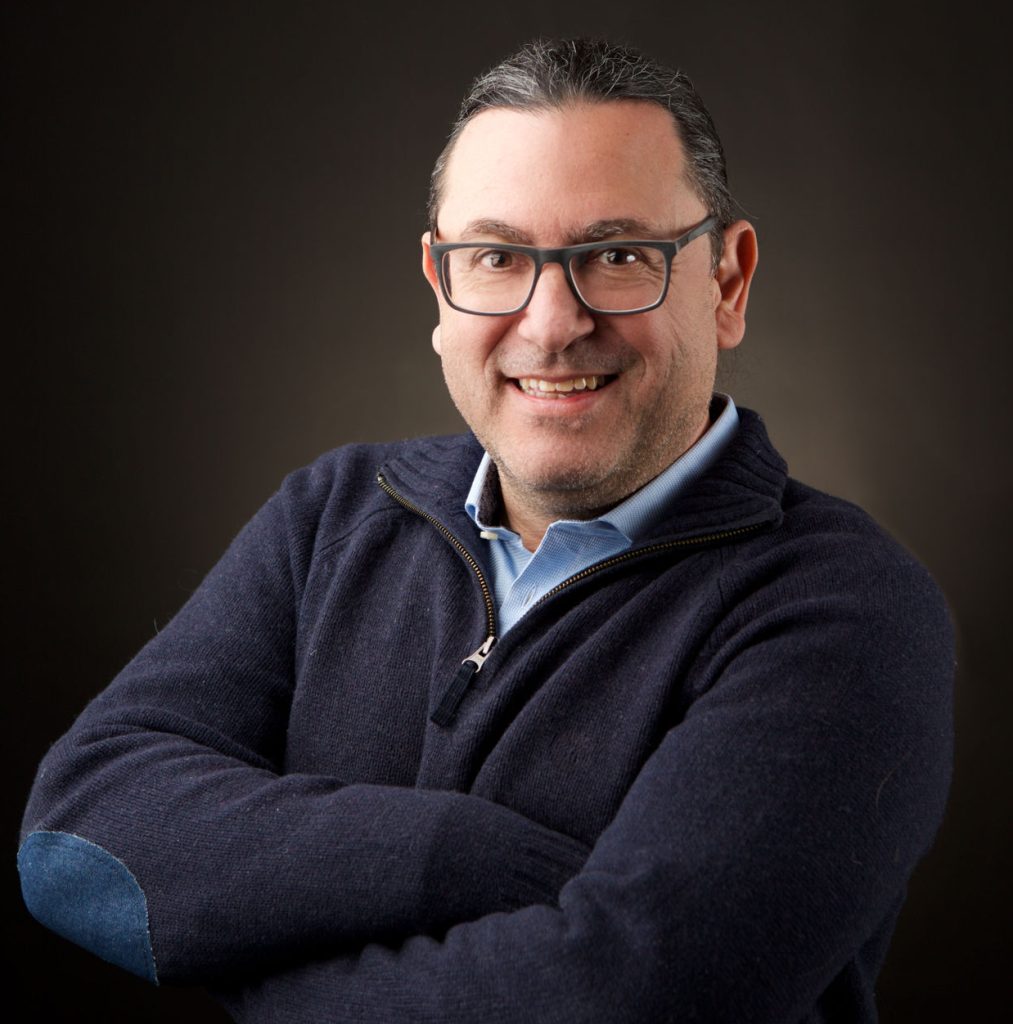
Michelangelo
Anastassiades
EURL SRM – European Union Reference Laboratory for Pesticide Residues in Food with Single Residue Methods, CVUA-Stuttgart.
Fellbach, Germany.

Amadeo
Fernandez Alba
EURL FV – European Reference Laboratory for Pesticide Residues in Fruit and Vegetables, University of Almeria
Almeria, Spain.
More
Founder of The Pesticide Residues Group AGR159 created in 1995, group of excellence by the Plan Andaluz de Investigation in Spain, he has coordinated 30 national or regional projects and more than 60 research contracts with national and international companies. He has led or participated in 16 European projects (5º-7º and H2020 Framework Programmes). He has published over 370 ISI-JCR articles, with more than 35,000 citations and an h-index of 105. He has supervised 28 PhD Thesis. Editor of 6 books and 17 book chapters and owner of 5 patents. Most of my scientific trajectory revolves around chemical evaluations using the latest advances in mass spectrometry-based technologies. Such evaluations have enabled the identification of contamination ‘hot spots,’ the development of predictive markers for future trends in these processes, the assessment and optimization of remediation technologies, improvements in legislation, the design of control systems, and the dissemination of findings. Lately we are developing methods for microplastic evaluation in atmosphere developing passive samplers to be installed on beehives with good results. Furthermore, the reuse of reclaimed water in greenhouse crop production is being also a relevant issue on research. An important line of my research focuses on balancing the growing food demand with minimizing the negative environmental impacts of agricultural production. The high demand for water, soil, and energy in food production comes with substantial negative environmental impacts. These include the application of chemical inputs such as pesticides and fertilizers, the use of limited natural resources like water and soil, and the generation of plastic and plant waste, which require evaluation and specific treatments. Based on this, I have developed numerous monitoring and control programs for chemical contaminants and environmental risk assessment studies across various scenarios while also collaborating on updating European legislation. These scientific and technological activities have expanded to related issues, including the reuse of regenerated water in agricultural practices, in addition to considering anthropogenic contaminants such as pharmaceuticals or personal care products. I initiated studies on the capacity of advanced oxidation processes for removing contaminants from water and plastic waste, enabling the regeneration of these resources. In 2006, a significant part of our research activities expanded considerably when we were appointed as a European Union Reference Laboratory for Pesticide Residues in Fruits & Vegetables, of which I have been the Director to this day. This position allows us to actively participate in the improvement and updating of European legislation on pesticide use and control in agricultural practices. Specifically, the update of EU regulations that address the sustainable use of pesticides and establishes demanding maximum limits for them. Our contribution has supported the development of the European model for the sustainable use of plant protection products and, more recently, the EU’s New Green Deal. Due to its contribution to agronomic activities, biodiversity, and ecosystem sustainability, we have established a new line of work that studies the threat of contaminants to the declining populations of honeybees. As a result, my laboratory has participated in the Spanish National Plans for chemical analysis.
New trend in Multiresidue Methods: Achieving the maximum with the minimum
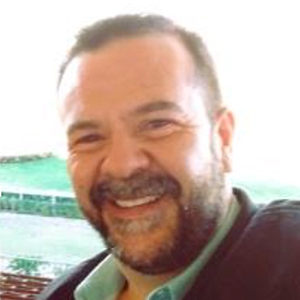
Sergio
Monteiro
Pesticide Residue Laboratory, Reference Laboratory for Research and Analysis of Contaminants in Food and Environment – Biological Instituto
São Paulo, Brazil
More
Micro-SPE and Automation in Residue and Contaminant Analysis' (final title subject to confirmation).

Nicolás
Michlig
PRINARC – FIQ- UNL
Santa Fe, Argentina
More
Bachelor in Chemistry, PhD.
Nicolás Michlig is research scientist at the Program of Research and Analysis of Chemical Residues and Contaminants of National University of Litoral in Santa Fe, Argentina. He received his degree in chemistry and PhD from the same University and then worked as a postdoc at the U.S. Department of Agriculture. For 12 years, his field of study has been chemical food safety, applying analytical chemistry to the analysis of residues and contaminants of varied origin in foods, with a focus on speeding and easing the different stages of the analytical process.
QuEChERSER without automation: centrifugal µ-SPE for the analysis of pesticides and other contaminants in foods
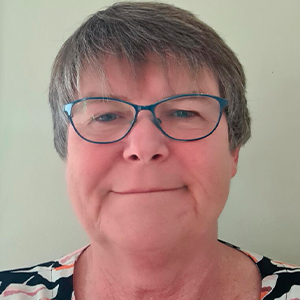
Mette Erecius
Poulsen
EURL-CF – European Reference Laboratory for Pesticide Residues in Cereals and Feeding Stuff National Food Institute, Technical University of Denmark
Lyngby, Denmark
News from the EURL for Cereals and Feeding Stuff

Björn
Hardebusch
EURL-AO
More
Brief CV Education:
Study of food chemistry at University of Münster, Germany
PhD thesis at University of Hannover, Germany
Professional experience:
2006–2007: study director Dr. U. Noack Laboratorien, Sarstedt
2007–2020: scientific expert in pesticide group and member of EURL-AO team in Freiburg
2020–present: Head of EURL AO
Participation in (inter)national bodies:
§64 working group “pesticides”
DIN working group “pesticides”
CEN working group “pesticides”
News from EURL-AO

Hubert
Zipper
EU-Reference Laboratory for Pesticide Residues requiring Single Residue Methods hosted at Chemical and Veterinary Investigations Office, Stuttgart (CVUAS)
More
Food Chemist, Ph.D. in Chemistry (University of Stuttgart)
Since 2006 Hubert Zipper is a researcher at the EU-Reference Laboratory for Pesticide Residues requiring Single Residue Methods, located at the Chemical and Veterinary Investigations Office Stuttgart, Germany. He is responsible for the development of the EURL DataPool and Pesticides-Online websites and is specialized on GC-MS analysis. In 2018 he started to work on fungicide DTCs with a focus on identification of new screening markers and on development of more efficient and targeted methods for the analysis of DTCs residues by GC and LC.
Quantification of metal-based dithiocarbamate residues in fruits and vegetables – A never-ending story?
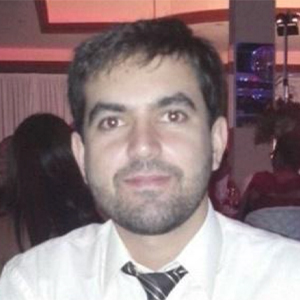
José
Wesley
BASF S.A.
More
Wesley José is a chemical engineer graduated from the University of São Paulo, with an exchange period at the National University of Tucumán in Argentina. He holds a specialization in advanced instrumental analysis and is currently completing a Master’s degree in Analytical Chemistry at the Federal University of São Carlos. Wesley has been working at BASF for over 13 years in the field of regulatory sciences. Presently, he serves as a scientist at the Global Environmental and Consumer Safety Laboratory at BASF in Brazil, being globally responsible for analytical methods of several novel active ingredients, where he applies advanced methodologies for pesticide residue analysis using techniques such as LC-MS/MS
Comprehensive evaluation on the impact of sample size and extraction equipment in pesticide residue analysis in food
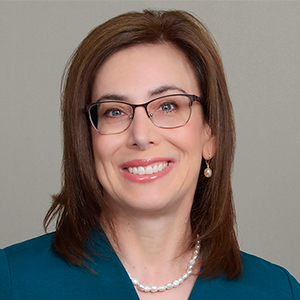
Leah
Riter
Bayer Crop Science
More
Dr. Leah Riter is a Senior Fellow at Bayer Crop Science. In her role in Regulatory Science, she partners with Regulatory and R&D leaders and experts across the global agricultural scientific community to evaluate safety and improve public awareness of new technologies. Previously she held several positions of increasing responsibility in Environmental Safety at Bayer where she led strategic innovations and technical aspects of analytical chemistry supporting human and environmental risk assessment. She is an active leader in the American Chemical Society, where she currently serves as the Division of Agrochemicals Councilor, and on the Divisional Activities Committee as well as the Journal of Agricultural and Food Chemistry Editorial Advisory Board. She is a Fellow of the American Chemical Society. She holds a Bachelor of Science degree in Chemistry from University of Florida and a doctorate in Analytical Chemistry from Purdue University.
Insights Powered by AI: Analyzing the Extent of Method Validation in Pesticide Residue Literature
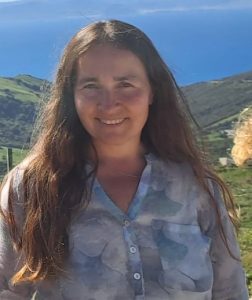
Virginia Carolina
Aparicio
National Institute of Agricultural Technology (INTA-Balcarce)
Argentina
More
Dr. Virginia Carolina Aparicio is a researcher at INTA and CONICET specializing in soil sciences. Her work focuses on evaluating the impact of input technologies—such as nutrients and pesticides—on soil, as well as the effects of complementary irrigation using sodium bicarbonate water. Since 2002, she has been studying the complex interactions between soil, pesticides, and water. She oversees INTA’s soil and water analysis laboratories and leads research projects funded by national public institutions, including INTA and FONCyT. Additionally, she collaborates on international research initiatives. Dr. Aparicio publishes her findings in high-impact scientific journals and is actively involved in disseminating research to non-scientific audiences. She also partners with various public institutions, including the Argentine national justice system, universities, and municipalities. A dedicated researcher, she relies on high-quality analytical data to drive her studies and advance knowledge in her field.
Pesticides in the Environment.

María Dolores
Hernando Guil
CSIC, The Spanish National Research Council, EEZA Experimental Station of Arid Zones
More
María Dolores Hernando Guil has participated in 10 projects under the National R&D Plan1996-1999, 2000-2003, 2004-2007, 2008-2011 and 2013-2016 (PPQ2001-1805-C03,PPQ2002-04573-C04-03, CTM2004-06265-C03, CTQ2005-09269-CO2, CE-CSD2006,CTM2007-65544), in 3 European projects from the FP5 and FP6 framework programs (P-THREE EVK1-CT; CADOX EVK1-CT; SWIFT-WFD SSPI-CT), 1 EU-Latin America cooperation project EUROLANTRAP and Cost Action 636. In 2 Integrated Action Programs with France (HF 2000-0092) and Greece (HG 2005-0006). She has coordinated 3 National projects involving 2 to 9 public entities under the National R&D&I Plan 2004-2007 and 2013-2016. She has served as principal investigator in 3 European projects under FP7 and H2020. These projects have addressed research on the environmental contamination, fate and behavior of contaminants. The study of environmental pollution has been conducted by identifying contaminants and quantifying their levels, with a particular emphasis on Persistent, Bioaccumulative, and Toxic (PBT) chemicals, Persistent Organic Pollutants (POPs), emerging pollutants, and microplastics. Subsequently, the projects assess exposure levels beyond which environmental or human health risks may be triggered. The critical need to preserve and manage natural resources, particularly in arid zones, has underscored the interdisciplinary nature of these research projects. They offer solutions for pollution control and strategies that prioritize the preservation and protection of these resources from contaminants. To date, she is a co-author of 105 scientific articles in JCR journals in Chemistry and Environment, with an h-index: 46 and 8182 citations. Co-author of 6 book chapters. Co-author of HERWE “Human and ecological risk screening tool for chemical pollutants in wastewater effluents”. Participation in technical reports evaluating the risk profile of Persistent Organic Pollutants, in the Review Committee of the Stockholm Convention of the United Nations. Participation in the Framework Guide for the identification of persistent, bioaccumulative and toxic chemical substances for consideration within the scope of the Stockholm Convention for the Strategic Approach for the Management of Chemical Products at the International Level (SAICM) of UN. She served as Head of the National Reference Center for the implementation of the European REACH Regulation (on the registration, evaluation, authorization and restriction of substances and chemical preparations), of the Global Harmonized System of Classification (GHS) (2007-2009) and of the National Reference Center on Persistent Organic Pollutants, in application of the Stockholm Convention of the United Nations (2007-2011). Since 2023, she has been the Head of the Department of Desertification and Geo-ecology, Experimental Station of Arid Zones, The Spanish National Research Council CSIC. She has participated in more than 150 international scientific conferences and in more than 30 seminars for national business confederations or associations in relation with the risks from chemical substances, in particular PBTs and POPs. She has supervised 8 Doctoral Thesis, and currently she is supervising 5 Theses. Professor in Ph.D. Programs, Master’s, Higher Technical Training Plans at the University of Almería, University of Alcalá, University Rey Juan Carlos, School of Industrial Organization EOI in Madrid.
Pesticides in microplastics: a Trojan horse in our food?
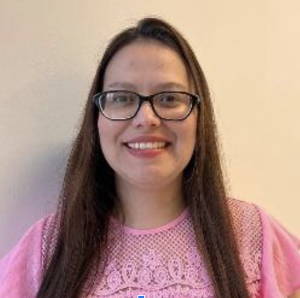
Jessie
Matarrita Rodríguez
Centro de Investigación en Contaminación Ambiental (CICA), Universidad de Costa Rica
Costa Rica
More
I hold an M.Sc. in Environmental Science from Texas A&M University-Corpus Christi, Texas, United States. Since 2007, I have been a researcher at the Laboratory of Pesticide and Organic Compounds Analysis at CICA, Universidad de Costa Rica. Currently, I am responsible for operating gas chromatography instruments, specifically the GC-µECD, GC-MS, and GC-MS/MS (QqQ). My research focuses on investigating innovative approaches to chemical residue analysis, particularly targeting pesticides, PCBs, and other organic contaminants in various matrices, including vegetables, fruits, water, sediment, soil, fish, and milk. My daily responsibilities include developing and implementing high-throughput methods while overseeing all aspects of the analytical process. This includes sample processing and preparation, chromatography, tandem mass spectrometry, evaluation of matrix effects, as well as quantification, identification, quality control, method validation, and data processing. I have collaborated with scientists from India, the United States, Germany, China, and Denmark, contributing to several scientific publications. My M.Sc. thesis focused on multi-residue pesticide analysis in the surface and groundwater of Southern Texas, using solid phase extraction and ultrahigh-pressure liquid chromatography coupled to a high-resolution Orbitrap Fusion Tribrid mass spectrometer.
Optimization and validation of SPE for the determination of pesticides in surface water by GC-MS/MS
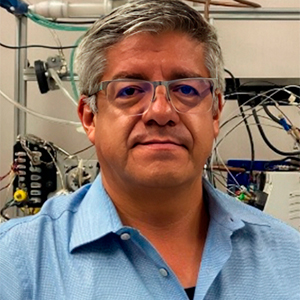
Omar
Amador Muñoz
Instituto de Ciencias de la Atmósfera y Cambio Climático,
Universidad Nacional Autónoma de México.
Ciudad de México, México
More
Químico (Tlaxcala). Maestría en Ciencias Químicas (UNAM). Doctorado en Ciencias Químicas (UNAM). Estancia Doctoral (RMIT, Australia). Posdoctorado en Química Atmosférica (Berkeley, California)
Amador is a Assistant Researcher. Coordinator and founder of the Laboratory of Chemical Speciation of Atmospheric Organic Aerosols. He has 59 scientific articles, 9 book chapters, 6 patents and work registrations and various popular articles. Director of ˃45 postdoctoral, doctoral, master’s and bachelor’s students. He has given ˃100 invited lectures/talks. More than 200 oral/poster presentations at national and international conferences. His students have received multiple awards at national conferences. Professor in the Graduate School of Earth Sciences and in the Faculty of Chemistry at UNAM. Reviewer of multiple national and international projects. Reviewer in many international journals. Synod member and tutor in multiple national and international undergraduate and graduate theses. Member of standardization committees. Coordinator of various scientific forums. Coordinator of the Technical-Scientific Committee for the Monitoring of Atmospheric Pollution in Mexico City. Coordinator and founder of the ICAyCC Student Congress.
Responsible for more than 15 research projects, which has allowed his laboratory to have one of the most complete infrastructures in Mexico and Latin America for the study of organic pollutants in the air at the molecular level.
Spatio-temporal distribution of atmospheric organochlorine pesticides in Mexico by GC-MS/NCI
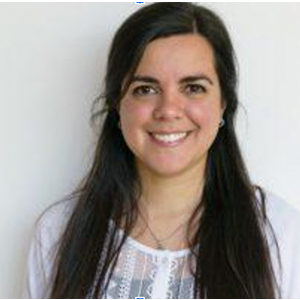
Natalia
Besil
Departamento de Química del Litoral, CenUR Litoral Norte, Universidad de la República
Uruguay
More
Pharmaceutical Chemist, Chemistry PhD.
Natalia Besil is a professor at the University of the Republic, CenUR Litoral Norte, Uruguay. She is a researcher in the Program for the Development of Basic Sciences (PEDECIBA), holds a Level I of the Uruguayan National Researchers System (SNI), and is an active member of the Group for the Analysis of Trace Contaminants, a well-known multicenter university laboratory for pesticide residue analysis.
She was a postgraduate researcher at the University of Almería, Spain, and at the FSCL/FAO/IAEA at Seibersdorf Laboratories in Vienna. She holds a PhD in Chemistry, focused on pesticide residue analysis in citrus matrices, recognized as the “Best Doctoral Thesis in Chemistry” by PEDECIBA in 2019. Prof. Besil has vast experience in trace analysis of organic contaminants, particularly chromatographic techniques coupled to mass spectrometry, in food and environment, with a strong focus on developing appropriate technological methodologies for the degradation of pollutants and the analytical confirmation of their dissipation.
Her research focuses on developing specific sample preparation procedures and instrumental methods for pesticide residue analysis in complex matrices through different thesis projects of graduate and postgraduate students in cutting-edge analytical chemistry projects.
She communicated her work and results through posters, short oral presentations, and lectures at more than 35 national and international conferences. She has authored 30 scientific publications, including journal articles and book chapters
Streamlined strategies for the determination of anionic pesticides using IC-MS/MS

Carmen
Ferrer
Laboratorio Europeo de Referencia para el análisis de residuos de plaguicidas en frutas y verduras (EURL-FV). Universidad de Almería.
Almería, España.
More
Graduate in Chemistry and Postgraduate in Analytical Chemistry
Official control of pesticide residues in the EU

Igor Renato
Bertoni Olivares
Sao Carlos Institute of Chemistry, University of Sao Paulo.
San Pablo, Brasil.
More

Iván Mauricio
Huérfano Barco
Colombian Agricultural Institute - ICA
Colombia
More
I am a chemist with a master’s degree in chemistry, specializing in the development of analytical methods based on chromatography and mass spectrometry for the analysis of contaminants in food and the environment, including pesticide residues, mycotoxins, persistent organic pollutants (POPs), and veterinary drugs. My work focuses on applying statistical techniques such as Design of Experiments (DoE) to optimize instrumental methods and develop analytical processes. I have extensive experience in quality management systems based on ISO 9001, ISO 17025, ISO 17034, and Good Laboratory Practices (GLP). Currently, I am working on the implementation of a quality system under ISO 17043, as well as the development of reference materials (RMs) for contaminants in food to evaluate the performance of accredited laboratories.
Transition of Testing Laboratories: A Path to Competence According to ISO 17034 and ISO 17043"
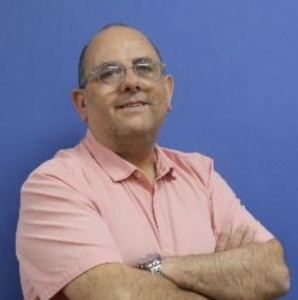
Eduardo
Aylwin
DChilean Food Safety Agency (ACHIPIA)
Chile
More
Agricultural engineer. Eduardo Aylwin works in the Risk Assessment Area of the Chilean Food Safety Agency (ACHIPIA). He is an expert in regulatory issues and pesticide risk assessment. He has participated in meetings of the Codex Committee on Pesticide Residues (CCPR) for 15 years. Currently leads the CCPR’s electronic working group on Management of Unsupported Compounds Without Public Health Concern Scheduled for Periodic Review. Since 2018, he has participated in the OECD’s Expert Groups on Biopesticides (EGBP), Minor Uses (EGMU), and Working Group on Pesticides (WPP). He is a regular contributor to pesticide initiatives organized by IICA, APEC, USDA, Minor Uses Foundation, IAEA, FAO, and WTO. He has participated in the LAPRW since 2015.
GECDE vs IEDI: A comprehensive review of 2 methodologies for the chronic dietary intake estimation in pesticides MRLs setting

Hans
Mol
Wageningen Food Safety Research (WFSR) – part of Wageningen University & Research.
Wageningen, the Netherlands.
More
Hans Mol is senior researcher at Wageningen Food Safety Research (WFSR), part of Wageningen University & Research in the Netherlands. He has 30 years of experience in method development, validation and analysis of pesticides residues in food, human, and environmental matrices. Main techniques used involve chromatography combined with various types of mass spectrometry, both for target and non-target analysis. The methods are applied for official analysis in the frame of MRL compliance testing, and for assessment of external and internal human exposure. He is heading the National Reference Laboratory for pesticides in food and feed in the Netherlands, and is member of the advisory board on the EU guidance document on quality control and method validation procedures for pesticide residue analysis in food and feed. He is involved as analytical partner in many national and EU projects including HBM4EU, SPRINT and PARC.

